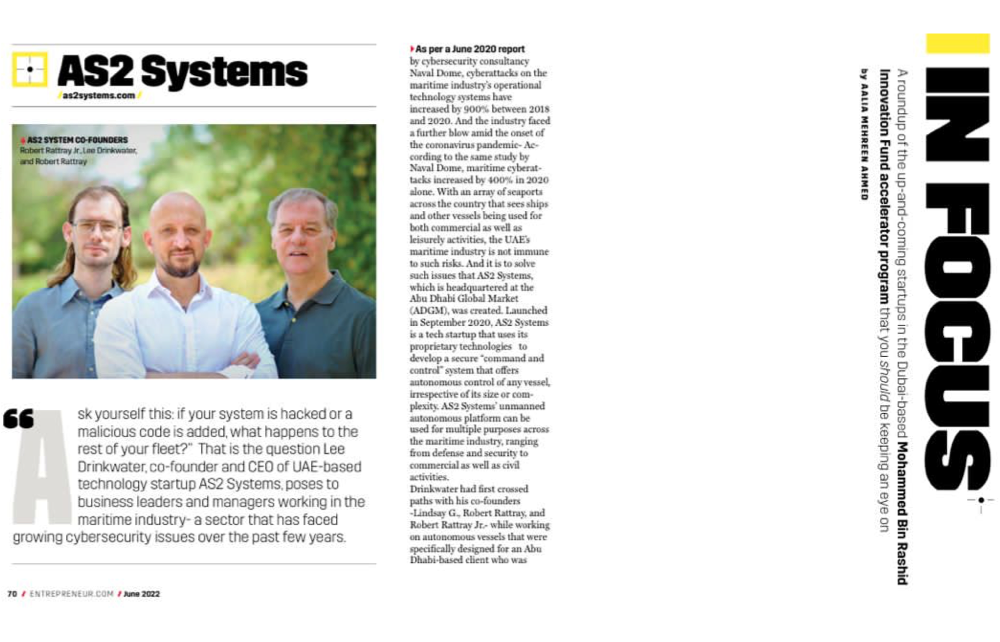


So Apple finally got wise with their System on a Chip technology, launched in November of 2020. It’s being said that their new M1X, (SoC) System on a Chip neural engine, will enhance Machine Learning and Artificial Intelligence performance and interaction with what we’re assuming will be 3rd party supplier interfaces.
Why am I writing this? Well, System on a Chip technology has been the basis of our autonomous systems for the last 6 years. Why? Because it’s faster and more secure. (Thank you Apple Inc for reaffirming it!)
Now, there’s a lot of new unmanned and autonomous control systems out there. A lot of builders of vessels and vehicles are “giving it a go” themselves, repeating the same mistakes over and over.
Most, if not all of the control systems we’ve been exposed to, have third party operating systems.
I’d like to pose a question, if I may?
If a vehicle or vessel is lost to an enemy force or a nefarious actor with ill intentions, there’s a strong possibility that they can plug in, hack your system and find out how you communicate with said control system.
That’s all well and good for one vehicle or vessel. However, what happens to the rest of your fleet? Does it now become defunct?
I’ll finish with this, If we could provide you with a system that can turn any vehicle land or sea into an unmanned autonomous platform, that is impossible to hack, provided you with more control, greater real time telemetry and doesn’t require any sharing of sensitive IP to integrate 3rd party systems, sensors or payloads…….
Would you take a Byte of that Apple?
Lee Drinkwater, Managing Director
AS2 Systems Ltd.




Some would disagree with the above statement, citing the fact that, what’s actually being discussed here are extreme levels of system hardening. This point of view is certainly not wrong, but at what level of ‘extreme’ does the attacker gain little if any reward.
A long standing misconception that has been perpetuated by the computer tech-giants is that “everything is hackable”. On a daily basis, we are reminded of this fact. The media does a great job of pushing the narrative.
It has of late, been a favorite topic for news corps. We also see it popping up in advertisements that litter the edges of many websites. TV shows and movies also perpetuate the notion, not to mention the onslaught of bleeps & bloops from our computers, reminding us that our device may be at risk of infection because, as we all know, there is nothing more enjoyable than having your anti-virus program distract you from that critical thought.
Since I was young, I’ve pondered the question, “Why are things hackable”. I’ve explored that idea ever since, as my knowledge and experience grew over the years, the answer evolved, I’ve carried this concept into every professional position I have filled, including AS2 Systems Ltd.
This explains why we make mention of this topic so much, by extension you’ll find this notion within our info-graphics and press-releases. It’s important to the company because it important not only to myself but all founding members.
Let me digress for a moment. To fully explore this concept, we need to define “hack-ability”
‘Hacking’ can be defined as the intentional modification and/or use of an item for purposes other than those for which it was intended.
Using the above statement, we could argue that someone who steals your credit card details and then empties you bank account by falsely using your credentials, is indeed a hacker!
We could also argue that Mr. John Doe who is at home in his garage, trying to make his 1989 Nintendo NES run DOS because watching your BlueRay collection in 240-Line Monochrome is all the rage, is also by definition a hacker.
Go now and look at the information label on your laptops power brick, it will inevitably state “For Indoor Use Only”, which by definition, makes anyone who has ever charged their laptop in the garden whilst enjoying a morning cup of coffee..... a “Hacker!”
Herein lays the problem, the word ‘Hacking’ has become synonymous with ‘Burglary’. Only 1 of the 3 examples given above were used for nefarious purposes. i.e. causing intentional hurt or loss to another.
To clarify, not all ‘hackers’ are criminals, however I don’t think anyone would disagree that pretty-much without exception all ‘burglars’ are indeed guilty of a crime.
Side note...I’ve always had a respect for Robin-Hood, merrily prancing about Nottingham forest in his green tunic, feathered hat and bright yellow stockings, conjuring up images of a pseudo Pan-Am stewardess mixed with a Christmas elf, whilst nicking the sheriffs gold and distributing it philanthropically to those on the bottom rung of the social ladder... is Robin a Hacker or a Burglar??... I’ll let the reader decide that one.
Anyway... let’s go a step further, in the first example above, we have an individual causing intentional loss of property, however, this was only possible because the system being exploited had an inherent weakness, a flaw in the design, most importantly, the flaw was in direct relation to the intended purpose of the system.
This kinda brings me full circle, the answer to the previously posed question, “Why are things hackable” is quite simple, whether intentionally or un-intentionally, said systems have inherent vulnerability built into the design.
This answer immediately brings up another question, the one that in my opinion, gets to the crux of the matter... How does one go about creating a device / system / component that is free from exploits and therefore ‘un-hackable’?
Robert Rattray Jr.
Co-Founder / Software
AS2 Systems Ltd.
